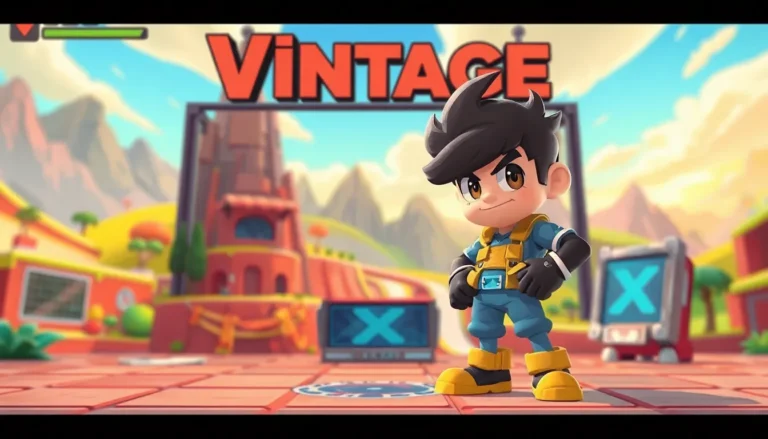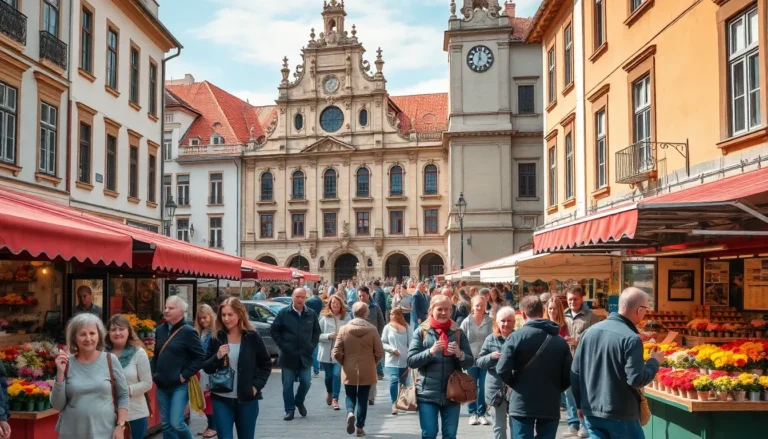In today’s fast-paced world, short-term hype can feel like a rollercoaster ride—thrilling at first but often leaving you dizzy and disoriented. One minute, everyone’s buzzing about the latest trend, and the next, it’s yesterday’s news, forgotten faster than last week’s lunch. But what drives this whirlwind of excitement?
Table of Contents
ToggleUnderstanding Short-Term Hype
Short-term hype refers to the brief bursts of excitement surrounding trends or events. This phenomenon captivates attention but fades quickly, often leaving little lasting impact.
Definition of Short-Term Hype
Short-term hype is characterized by intense enthusiasm driven by social media buzz or marketing tactics. Events or products often generate significant attention in a limited time. Popularity spikes swiftly but can equally diminish overnight. For instance, viral challenges or product launches exemplify how quickly excitement can rise. Understanding this definition helps identify ways to navigate trends effectively.
Key Characteristics
Several key characteristics define short-term hype. First, rapid rise and fall describe its lifecycle clearly. Trends often gain traction through influencers or media coverage, creating an illusion of sustainability. Next, emotional engagement plays a significant role, prompting impulsive consumer behavior. FOMO, or fear of missing out, further fuels this phenomenon. Lastly, the eventual decline highlights the unsustainable nature of short-term hype. Recognizing these traits aids in evaluating trends critically.
The Psychology Behind Short-Term Hype
Short-term hype captivates attention due to various psychological factors. Emotional triggers play a vital role in this phenomenon.
Emotional Triggers
Emotions significantly drive engagement during short-term hype. Feelings of excitement and anticipation encourage people to participate in trends. Anxiety about missing out on experiences or opportunities fosters a heightened sense of urgency. Social validation often amplifies emotional responses, with individuals seeking approval from peers. As this wave of enthusiasm builds, behaviors become contagious, leading to a collective frenzy. Emotional arousal not only reinforces participation but also keeps attention locked on fleeting trends.
Cognitive Biases
Cognitive biases influence perception and decision-making in the context of hype. Confirmation bias leads individuals to focus on information that validates their excitement. This selective filtering reinforces the belief that a trend has merit, even if evidence suggests otherwise. Anchoring bias can cause initial exposure to a trend to set a reference point, skewing future judgments. Availability heuristic results in a prioritization of recent trends over sustainable options. These cognitive distortions create a fertile environment for short-term hype to flourish, obscuring rational assessments of significance.
Examples of Short-Term Hype in Different Industries
Short-term hype manifests across various industries, showcasing unique examples of fleeting trends that capture public attention.
Technology Sector
Product launches often create short-term hype within the technology sector. For instance, smartphone releases frequently generate excitement, with consumers lining up to acquire the latest model. Companies rely on meticulous marketing strategies, promoting features that intrigue potential buyers. Social media platforms amplify this phenomenon, as influencers share unboxing videos and first impressions. Consequently, the initial rush contributes to sales spikes, yet many buyers soon realize the novelty fades as newer models emerge. Thus, the hype ebbs, leaving behind a landscape of rapidly outdated technology.
Fashion Industry
The fashion industry thrives on short-term hype through seasonal collections and limited-edition items. Designers unveil new lines during fashion weeks, sparking immediate interest and anticipation among consumers. Fast fashion brands capitalize on this, introducing trends that mimic runway styles at lower prices. Collaboration with celebrities often accelerates the hype cycle, driving demand for exclusive pieces. However, trends shift quickly, leading to a closet full of items that soon feel outdated. Ultimately, consumers rotate through styles, perpetuating the cycle of rapid excitement followed by diminishing relevance.
The Impact of Short-Term Hype
Short-term hype significantly influences various sectors, driving both excitement and confusion. This phenomenon showcases distinct effects, ranging from positive to negative.
Positive Effects
Rapid visibility often characterizes short-term hype, allowing brands to capture attention quickly. It spurs innovation as companies respond to fleeting trends and consumer desires. Increased sales can result from the urgency created by limited-time offers and product launches, motivating consumers to act swiftly. Enhanced brand awareness surfaces as companies leverage social media to spread their messages, reaching broader audiences almost instantly. Engaged communities form around trendy products, fostering a sense of belonging among consumers.
Negative Consequences
Short-lived excitement can lead to consumer disappointment when expectations don’t align with reality. Unsustainable demand sometimes strains resources, resulting in inadequate supply and missed opportunities. Overconsumption often escalates as consumers purchase impulsively, contributing to waste and environmental harm. After the initial thrill, market saturation can occur, leaving brands struggling to maintain momentum. Heightened competition may emerge as numerous companies rush to capitalize on trends, ultimately diluting their individual messaging and effectiveness.
Short-term hype is a double-edged sword that shapes consumer behavior and industry dynamics. While it can create excitement and drive engagement it often leads to disappointment and unsustainable practices. Understanding the psychological factors behind this phenomenon empowers individuals to make informed decisions and navigate trends more wisely.
As industries continue to evolve the impact of short-term hype will remain significant. Recognizing the fleeting nature of these trends allows consumers and brands to better manage expectations and foster sustainable practices. Embracing a more critical approach to short-term hype can lead to more meaningful interactions and lasting connections in an ever-changing landscape.






